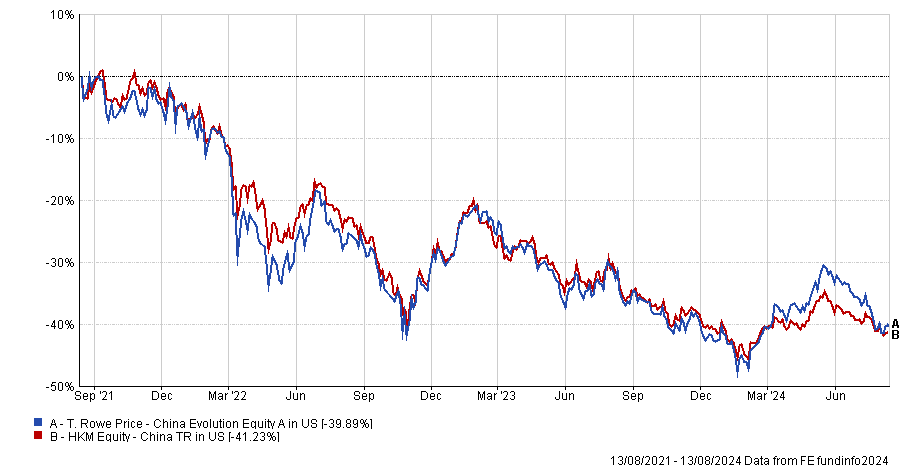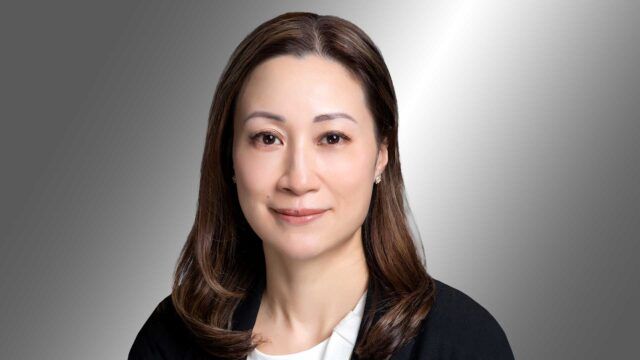T Rowe Price is placing focus on areas aside from just growth equities, particularly fixed income, its head of distribution for Asia Pacific, Elsie Chan (pictured), said during a recent interview with FSA.
T Rowe Price was founded by Thomas Rowe Price Jr, who is known as the father of growth investing and launched its first mutual fund, the T Rowe Price Growth Stock fund in 1950.
However, that style of investing faced a battering in 2022 when poor performance sent investors running for the exits.
Those difficulties were compounded by the impact of higher interest rates last year, further exacerbating outflows.
But Chan is keen to emphasise the firm’s pedigree in other areas, notably fixed income, something which sometimes may have escaped the attention of investors.
“I would say even though we do have a lot of clients who appreciate us and trust us in managing growth equity portfolios, we certainly have a lot of clients who look to us for other styles and asset classes as we’ve evolved over the last few decades,” said Chan.
“Fixed income has been a nice growth area for us. Even though people know us for equities, we actually manage about $182bn globally in fixed income assets.”
Beyond equities
T Rowe Price has not been immune from the recent difficulties across the industry as investors have pulled money at record rates from risk assets, favouring the high yields on offer for cash.
According to its most recent annual results, the firm experienced a record year for outflows last year, totalling $81.8bn, including $85.4bn for equities.
Indeed, T Rowe Price has now posted 13 straight quarters of outflows after it reported that investors pulled $3.7bn during the second quarter of this year.
The Baltimore-headquartered firm has even gone as far as saying that it does not expect to experience positive flows until 2025 at the earliest.
However, the outlook is more mixed when looking beyond equities, as investors added $7.8bn in fixed income during the second quarter.
Chan notes that fixed income has been a bright spot and this was especially the case in Asia, although she declined to give detailed figures as the firm does not break down its results by region.
“Last year in Apac, we did see some outflows but we also saw some new business come in, particularly in the fixed income area. It wasn’t too bad,” she said.
“I would say Q1 for us especially in Apac this year compared with last year certainly has improved. I would imagine for a lot of our competitors it’s probably similar.”
Asia focus
In Asia, T Rowe Price has offices in Hong Kong, Shanghai, Singapore, Sydney and Tokyo, comprising a mixture of investment and distribution, with the exception of Shanghai, which is just an investment office.
Chan separates the business into three main sub-regions, namely Asia ex-Japan, Japan and Australia. Out of the three, the first two are larger, although she sees growth prospects across all three regions.
Chan said that the firm is putting more focus on the region and its headcount, which stands at around 400, and actually went up last year, despite the fact that the firm last year announced further cuts to its workforce globally as part of its efforts to reduce operating expenses by $200m.
“If you look at T Rowe Price’s long history, something that we tend to do is invest across the market cycles. A big reason for that is our financial strength. If you look at our balance sheet, we have no long-term debt. We have substantial cash reserves,” she said.
“I think certainly the last few years was difficult for a lot of asset managers but we are very careful in reviewing how we use headcount and putting headcount into those areas that will help us grow with our clients.”
Finding pockets
When asked where else T Rowe Price is placing more emphasis, Chan is unusually reticent, noting that while there are pockets of opportunity, the salient focus is on delivering for the firm’s clients in whatever way is most appropriate.
She mentions the intermediary business being one area and notes that the firm is due to welcome some major retail distribution partnerships, although she notes that this is an already crowded area so is less bullish compared with some of her peers.
(Since the interview, T Rowe Price announced that it had partnered with Manulife Hong Kong to distribute one of its flagship bond funds, the T Rowe Price Funds SIACV – Diversified Bond Fund fund to retail investors).
Surprisingly, she also mentions ESG as being an area, which has gained traction, particularly in Australia and Japan, although she concedes that across the region, there is less enthusiasm for it as a concept.
Unusually, she also mentions that China is an area where the firm has seen some traction, particularly its China Evolution Equity Fund, which invests beyond the mega-cap names and has outperformed the sector on a one-year and three-year basis, according to FE fundinfo (see chart).

China strategy
With regards to the firm’s operations in China, the big question concerns T Rowe Price’s long-term strategy given that it has yet to apply for any of the major licences unlike many of its peers.
The big play for a lot of asset managers is to set up a wholly owned mutual fund business after regulators scrapped ownership caps in 2020. BlackRock became the first to do so in 2021 and others have since followed suit, including Neuberger Berman and Fidelity.
So far it has not been smooth sailing for most foreign asset managers. BlackRock, for example, raised only Rmb573m ($80.1m) for its second onshore fund versus Rmb6.68bn for its first. Vanguard scrapped plans altogether for a mutual fund unit, citing a “crowded” market.
Unusually, T Rowe Price has not only has not committed publicly to applying to set up a fund management company and also currently does not hold any of the other licences including the private fund management licence or the qualified domestic limited partnership licence.
However, this is something that Chan thinks will come in time.
“I think China onshore licences will come in time, but I think now we definitely want to focus on working with our clients in terms of their offshore assets. There’s still I think a lot of opportunities for us to tap on to deepen in terms of focusing on the offshore assets,” she said.

















